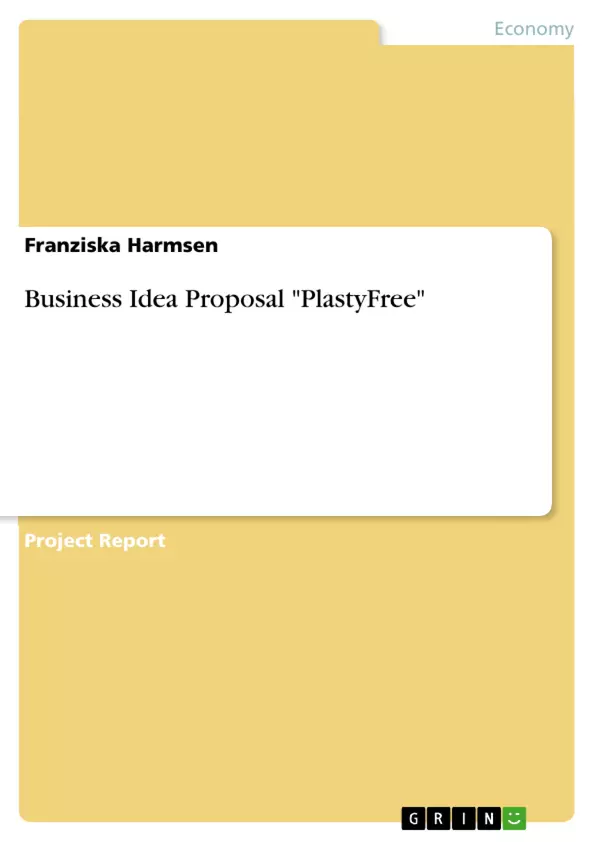This project thesis starts with a description of the product and problem statement to give a brief overview. The next paragraph deals with Osterwalder’s business model canvas and it’s nine segments based on the business. A unique selling proposition is given in the next chapter which gives information about the product in comparison to other products on the market. In the further course of this thesis, an environmental analysis is given with comparison to two relevant competitors.
The next paragraph deals with a marketing plan which gives insight on how to gain attention to the business. Furthermore, the legal form of the business is presented. Following this, there is a financial plan for the next five years to give an overview over the costs and calculations. To conclude, there is a risk analysis and a resume.
Inhaltsverzeichnis (Table of Contents)
- Executive summary
- Introduction
- Structure of the project thesis
- Description of the product
- Problem statement
- Location
- Application of Osterwalder's business model canvas
- Customer segments
- Value proposition
- The value proposition canvas
- Channels
- Customer relationship
- Revenue streams
- Key resources
- Key activities
- Key partnerships
- Cost structure
- Unique selling proposition
- Environmental analysis
- Marketing
- Legal form
- Financial plan for five years
- Risk analysis
- Resume
- References
- Appendix
Zielsetzung und Themenschwerpunkte (Objectives and Key Themes)
This business plan outlines the concept of PlastyFree, a grocery store that aims to minimize packaging waste and offer a sustainable shopping experience for conscious consumers. The plan explores the feasibility of this concept, focusing on its unique selling proposition, market analysis, and financial projections.
- Minimizing plastic waste in the grocery industry
- Promoting sustainable and environmentally friendly consumption
- Developing a unique business model based on a minimal packaging supply chain
- Analyzing the market potential and competitive landscape for PlastyFree
- Creating a comprehensive financial plan for the first five years of operation
Zusammenfassung der Kapitel (Chapter Summaries)
The executive summary provides a concise overview of the PlastyFree concept, highlighting its mission to reduce plastic pollution and offer a sustainable grocery shopping experience. The introduction further elaborates on the problem statement and the store's location, setting the stage for the subsequent chapters.
The following chapters delve into the application of Osterwalder's business model canvas, examining key elements such as customer segments, value proposition, channels, customer relationships, revenue streams, key resources, key activities, key partnerships, and cost structure. This detailed analysis provides a comprehensive understanding of the business model and its potential for success.
The remaining chapters focus on the unique selling proposition of PlastyFree, environmental analysis, marketing strategies, legal form, financial plan for five years, risk analysis, and a final resume summarizing the key findings and recommendations.
Schlüsselwörter (Keywords)
The key terms and concepts explored in this business plan include: plastic pollution, sustainable grocery shopping, minimal packaging supply chain, business model canvas, value proposition, market analysis, financial planning, risk assessment, and environmental impact.
- Arbeit zitieren
- Franziska Harmsen (Autor:in), 2019, Business Idea Proposal "PlastyFree", München, GRIN Verlag, https://www.grin.com/document/469424



